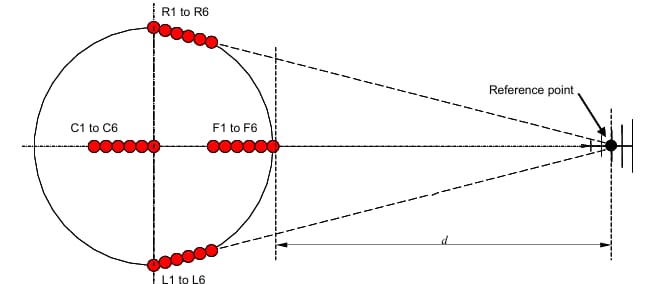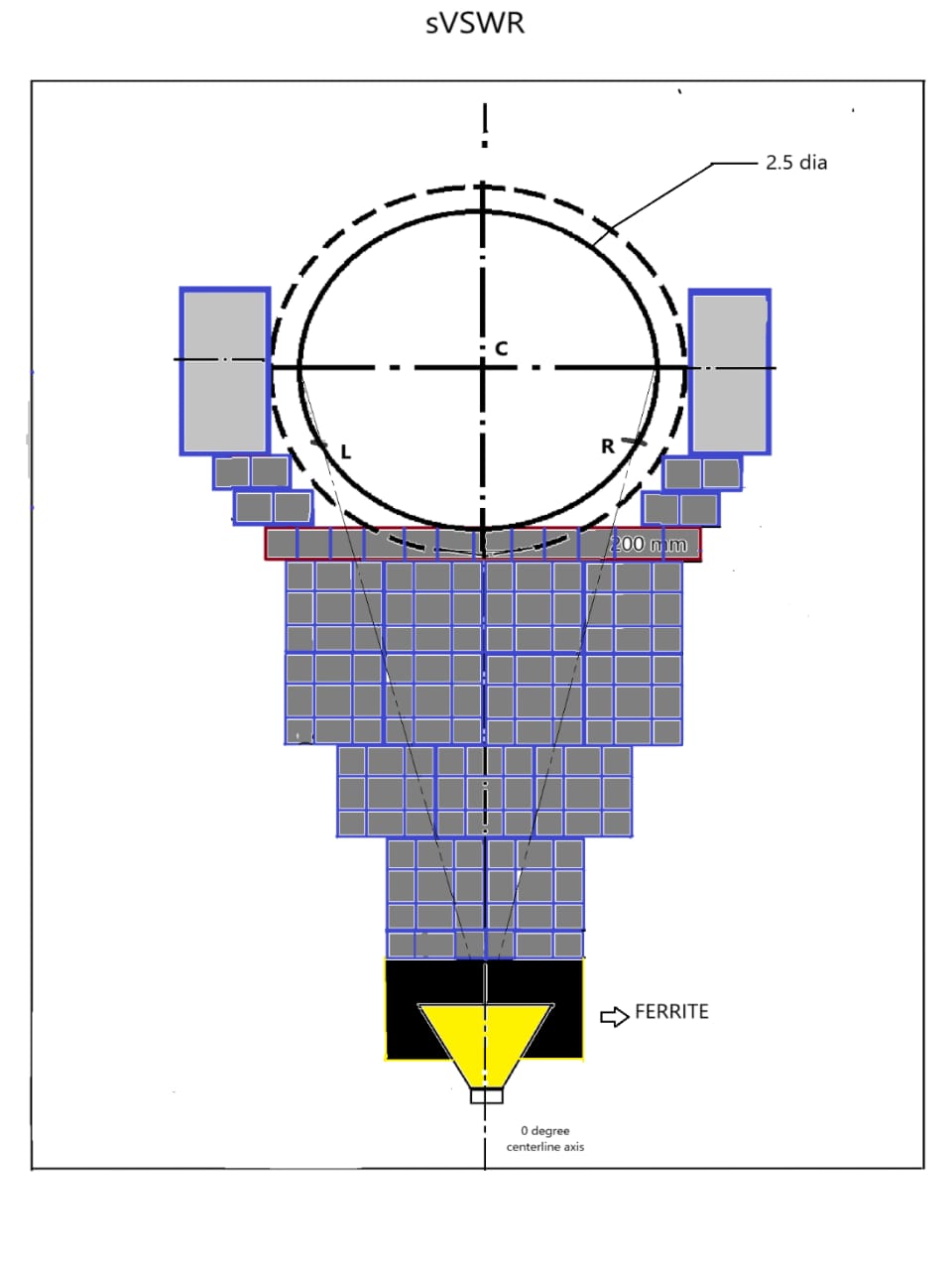Site Voltage Standing Wave Ratio (sVSWR) is a critical parameter used to validate the uniformity of the electromagnetic field in semi-anechoic chambers (SACs). As per CISPR 16-1-4, EMI test sites for radiated emission measurements in the 1 GHz to 18 GHz require site validation by measurement of site voltage standing wave ratio (SVSWR), which is the ratio of the maximum received signal to the minimum received signal caused by interference between direct (intended) and reflected signals. There are two different approaches for showing compliance with the acceptance criterion:
sVSWR measures the ratio of the maximum to minimum voltage in a standing wave pattern created in a test environment. It ensures the field uniformity and integrity of SACs for EMC compliance testing, especially from 1 GHz to 18 GHz. High sVSWR indicates poor site performance due to reflections and standing waves.
CISPR 16-1-4 outlines procedures for validating SACs and anechoic chambers. It includes:


The measurement involved setting up a Small biconical transmit antenna on an automatic positioner and a broadband horn receive antenna on a fixed mast. The antenna were connected to the vector network analyser, which was setup to measure the S21 parameter. A laptop PC equipped with software was used to control the automatic positioner, and also acquire the S21 data from the VNA.
Ambient noise measurements were carried out by disconnecting the transmit antenna and connecting the receive antenna only. It was confirmed that the ambient noise is more than 20dB below the actual signal.
Vector Network Analyzer sweep was then acquired for all the six test positions by moving the positioner.
dmnopq = is the actual separation distance for the measurement location;
dref = is the separation distance measured to the reference position;
Mmnopq = is the measured signal (field strength or receiver voltage) in dB.
M’mnopq = is normalized measured field strength or voltage data relative to the distance of the reference position.
sVSWR (dB) = Emax(dB)-Emin(dB)
= Max (position corrected readings) – Min (position corrected readings)
sVSWR validation is a mandatory requirement for SACs used in EMC testing frequency 1 GHz to 18 GHz. CISPR 16-1-4 provides a structured and repeatable method to confirm the electromagnetic uniformity of the test site. Proper adherence to this standard ensures measurement accuracy and regulatory compliance.
Copyright © 2024 – Tekiknow – All Rights Reserved Designed By Clemence Web Solutions.,